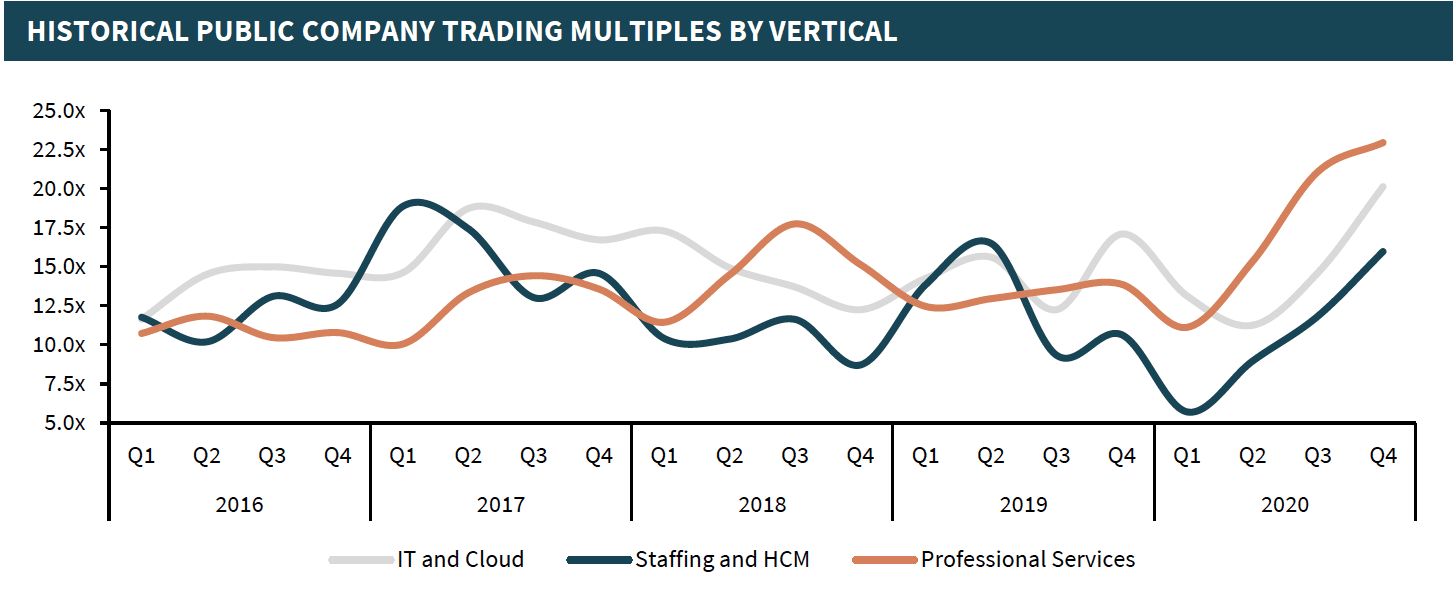Introduction
Welcome to the world of investing, where your financial future starts to take shape. Investing is an essential tool for building wealth and achieving long-term financial goals. Whether you’re saving for retirement, a down payment on a house, or funding your child’s education, investing can help accelerate your financial growth. But how much will your investments be worth in the future?
The answer lies in the power of compound interest. Compound interest is the concept of earning interest on both your initial investment and the accumulated interest over time. As your investments grow, so does the potential for them to generate even more returns.
However, the future value of your investments is influenced by various factors. The amount of money you invest, the length of time you stay invested, the rate of return you earn, and the frequency of your contributions all play a crucial role in determining the final amount you will have.
This article aims to provide you with a comprehensive understanding of how investments grow over time. We will explore the key factors that impact your investment’s growth, calculate the future value of your investments, and discuss the significance of regular contributions. Additionally, we will delve into the importance of time in investment growth, explore different investment options and their associated risks and rewards, and provide strategies to maximize your investment growth.
By the end of this article, you will be equipped with the knowledge and tools necessary to make informed investment decisions and effectively plan for your financial future. So let’s dive in and discover how much your investments could be worth!
Understanding Compound Interest
Compound interest is a powerful force that can significantly impact the growth of your investments. Unlike simple interest, where you only earn interest on your initial investment, compound interest allows you to earn interest on both your principal amount and any accumulated interest. This compounding effect can lead to exponential growth over time.
Let’s break down the concept with an example. Say you invest $1,000 with an annual interest rate of 5%. At the end of the first year, you would earn $50 in interest. In the second year, your interest is calculated based on your new total of $1,050, resulting in $52.50. As this cycle continues, your earnings grow not just linearly, but exponentially.
The frequency at which interest is compounded can also impact your investment growth. While some investments compound interest annually, others compound quarterly, monthly, or even daily. The more frequently interest is compounded, the faster your investments will grow.
Understanding compound interest is vital because it highlights the significance of starting early. The longer your money is invested, the more time it has to compound and grow. Even small contributions made early on can have a substantial impact on your investment’s future value.
Another critical factor to consider is the rate of return you earn on your investments. The higher the rate of return, the more your investments will grow over time. However, it’s important to strike a balance between high returns and the associated risks. The level of risk you are willing to take should align with your financial goals and risk tolerance.
Now that we have a basic understanding of compound interest, let’s explore the factors that can affect your investment’s growth in the next section.
Factors Affecting Your Investment’s Growth
Several key factors can influence the growth of your investments. Understanding these factors will help you make informed decisions and optimize your investment strategy:
- Rate of Return: The rate of return is the percentage gain or loss on your investment. Higher rates of return can accelerate the growth of your investments, but they often come with increased risk. Balancing risk and return is crucial to building a diversified investment portfolio.
- Investment Time Horizon: The length of time you plan to stay invested can significantly impact your investment’s growth. Generally, longer time horizons allow for more potential growth due to the power of compounding. If you have a longer time horizon, you may have more flexibility to weather short-term market fluctuations.
- Contributions: Regular contributions to your investments can boost growth significantly. By committing to contribute a fixed amount on a regular basis, such as monthly or annually, you take advantage of dollar-cost averaging. This strategy allows you to buy more shares when prices are low and fewer shares when prices are high, potentially lowering your average cost per share.
- Tax Considerations: Understanding the tax implications of your investments is essential, as taxes can impact your overall returns. Different types of investments may be subject to different tax treatments, such as capital gains tax or dividend tax. Consult with a tax professional to ensure you optimize your investment strategy in alignment with your tax situation.
- Inflation: Inflation erodes the purchasing power of your money over time. To counteract the effects of inflation, it’s essential to seek investments that generate returns that outpace inflation. By investing in assets that have historically outperformed inflation, such as stocks or real estate, you increase the likelihood of preserving the value of your investments in real terms.
It’s important to remember that these factors are interrelated, and their impact on your investment growth can vary depending on your specific circumstances and investment goals. By assessing and understanding these factors, you can make informed decisions to enhance the growth potential of your investments.
Calculating Future Value of Your Investments
Understanding how to calculate the future value of your investments is key to setting realistic financial goals and tracking your progress. There are various formulas and online calculators available that can assist you in this process.
One commonly used formula is the compound interest formula:
Future Value (FV) = Principal Amount (P) × (1 + Interest Rate (r))^n
In this formula, P represents the initial principal amount, r denotes the interest rate, and n represents the number of compounding periods.
Let’s say you invest $5,000 with an annual interest rate of 6% for 10 years, compounded annually. Using the compound interest formula, we can calculate the future value of your investment:
FV = $5,000 × (1 + 0.06)^10
FV = $5,000 × 1.790847
FV = $8,954.23
According to this calculation, your $5,000 investment would grow to approximately $8,954.23 after 10 years.
Remember that the compound interest formula assumes a fixed interest rate and regular compounding periods. However, in reality, investment returns can often fluctuate. It’s important to consider potential variations in interest rates and compounding periods when assessing the future value of your investments.
Fortunately, there are numerous online calculators available that can provide more accurate calculations based on specific investment scenarios and variables. These calculators allow you to input factors such as initial investment amount, interest rate, time horizon, and regular contributions to determine the future value of your investments.
By utilizing these calculators and familiarizing yourself with the compound interest formula, you can gain a clear understanding of the growth potential of your investments and make informed decisions to align your investment strategy with your financial goals.
Regular Contributions and Their Impact on Future Value
Regular contributions play a significant role in determining the future value of your investments. By consistently adding to your investment portfolio, you not only increase the total amount invested but also benefit from the power of compounding.
Let’s explore how regular contributions can impact the future value of your investments through an example. Suppose you invest $1,000 initially with an annual interest rate of 7% for 10 years. Additionally, you commit to contributing an additional $100 every month to your investment.
Without factoring in the regular contributions, we can calculate the future value of the initial $1,000 investment using the compound interest formula:
FV = $1,000 × (1 + 0.07)^10
FV = $1,000 × 1.967151
FV = $1,967.15
Now, let’s consider the impact of the monthly contributions. Over the 10-year period, you would contribute a total of $100 × 12 months × 10 years = $12,000. By incorporating the regular contributions into the calculation, we can determine the future value of the investments:
FV = ($1,000 × (1 + 0.07)^10) + ($100 × ((1 + 0.07)^10 – 1) / 0.07)
FV = ($1,000 × 1.967151) + ($100 × (1.967151 – 1) / 0.07)
FV = $1,967.15 + $15,130.20
FV = $17,097.35
Comparing the two scenarios, we can see that by making regular contributions of $100 per month, the future value of your investments increases to $17,097.35. The additional contributions accelerate the growth potential of your investments over time.
This example underscores the importance of consistent contributions to your investment portfolio. Even small amounts contributed regularly can have a significant impact on the final value of your investments.
Additionally, systematic investing through regular contributions allows you to take advantage of dollar-cost averaging. By investing a fixed amount on a regular basis, you buy more shares when prices are low and fewer shares when prices are high. This approach can help smooth out the impact of market fluctuations and potentially reduce the average cost per share over time.
Incorporating regular contributions into your investment strategy not only increases the potential for higher returns but also demonstrates a disciplined approach to growing your wealth over the long term.
Importance of Time in Investment Growth
When it comes to investment growth, time is undeniably one of the most crucial factors. The longer you have your money invested, the more time it has to benefit from the power of compounding and generate substantial returns.
Let’s consider two scenarios to understand the impact of time on investment growth:
Scenario 1: You invest $10,000 with an annual interest rate of 8% for 10 years.
Scenario 2: You invest the same $10,000 with the same interest rate of 8% but for 20 years.
Using the compound interest formula, we can calculate the future value of both scenarios:
Scenario 1:
FV = $10,000 × (1 + 0.08)^10
FV = $10,000 × 2.158925
FV = $21,589.25
Scenario 2:
FV = $10,000 × (1 + 0.08)^20
FV = $10,000 × 4.661008
FV = $46,610.08
By simply extending the investment period from 10 to 20 years, the future value of your $10,000 investment more than doubles.
This example emphasizes the power of compounding and the importance of giving your investments sufficient time to grow. The longer your money remains invested, the greater the potential for exponential growth.
Time also helps mitigate the impact of short-term market fluctuations. By adopting a long-term investment approach, you can ride out market volatility and take advantage of the overall upward trajectory of the market. This approach reduces the likelihood of making impulsive decisions based on short-term market movements and allows for a more calculated and patient investment strategy.
Moreover, many investments, such as stocks and mutual funds, tend to generate higher returns over longer periods. While short-term investments may provide quick gains, they often come with higher volatility and risk. By staying invested for the long term, you increase the likelihood of capturing the full potential of your chosen investment vehicles.
Ultimately, the sooner you start investing and the longer you remain invested, the greater the opportunity for your money to grow. Time allows compounding to work its magic and significantly enhance the value of your investments.
Risk and Rewards: Exploring Investment Options
Investing involves assessing and managing risks in order to seek potential rewards. There are various investment options available, each with its own level of risk and potential return. Let’s explore some common investment options and their associated risks:
- Stocks: Stocks represent ownership in a company and offer the potential for high returns. However, they also come with greater volatility and higher risk. Stock prices can fluctuate significantly based on market conditions, economic factors, and company performance.
- Bonds: Bonds are fixed-income securities issued by governments, municipalities, or companies. They provide a predetermined interest rate and fixed maturity date. Bonds tend to offer lower returns compared to stocks but are generally considered less risky.
- Mutual Funds: Mutual funds pool money from multiple investors to invest in a diversified portfolio of stocks, bonds, or other assets. They offer the advantage of professional management and instant diversification. However, they come with management fees and the risk associated with the underlying investments.
- Exchange-Traded Funds (ETFs): ETFs are similar to mutual funds but trade on stock exchanges like individual stocks. They provide investors with diversification and lower expenses, making them an attractive option. However, like mutual funds, ETFs carry the risk associated with the underlying investments.
- Real Estate: Investing in real estate can provide both income from rental properties and potential appreciation in property value. However, real estate investments require significant upfront capital, carry the risk of vacancy or lack of tenants, and can be affected by fluctuations in the housing market.
- Commodities: Commodities include assets such as gold, silver, oil, and agricultural products. Investing in commodities can act as a hedge against inflation and economic uncertainty. However, commodity prices can be highly volatile and influenced by various factors such as supply and demand dynamics and geopolitical events.
- Options and Futures: Options and futures are derivatives contracts that allow investors to speculate on the price movements of underlying assets. These instruments can provide opportunities for high returns but also carry substantial risks and complexities.
It’s important to note that different investment options suit different risk tolerances, investment horizons, and financial goals. The key to successful investing is to diversify your portfolio in order to spread your risk across different asset classes. This includes a mix of high-risk, high-reward investments and more stable, conservative options.
While investments carry inherent risks, it’s essential to conduct thorough research, understand the risks associated with each investment option, and align your investments with your risk tolerance and financial goals. Consulting with a financial advisor can provide valuable guidance in selecting the right investments for your specific needs.
Remember, the potential for higher returns often comes with increased risk. Balancing risk and reward is crucial for creating a well-rounded investment portfolio that aligns with your unique financial situation and goals.
Strategies to Maximize Your Investment Growth
Maximizing your investment growth requires implementing effective strategies that align with your financial goals and risk tolerance. Consider the following strategies to optimize your investment growth:
- Set Clear Financial Goals: Define your financial objectives, such as saving for retirement, buying a home, or funding your children’s education. Having clear goals helps you develop a targeted investment plan and stay focused on your long-term vision.
- Diversify Your Portfolio: Invest in a variety of asset classes, such as stocks, bonds, real estate, and commodities, to spread your risk across different markets. Diversification helps mitigate the impact of individual investment fluctuations and reduces the overall volatility of your portfolio.
- Regularly Review and Rebalance: Regularly assess the performance of your investments and adjust your portfolio as needed to maintain your desired asset allocation. Rebalancing involves selling overweight positions and reinvesting in underweight ones to maintain the desired balance and minimize risk.
- Stay Invested for the Long Term: Avoid reactionary behavior based on short-term market fluctuations. Trying to time the market can be challenging and often results in missed opportunities. Stay invested for the long term and let the power of compounding work to your advantage.
- Keep Emotions in Check: Emotions can influence investment decisions and lead to irrational choices. Stick to your investment strategy and avoid making impulsive decisions based on fear or greed. Consult with a financial advisor to ensure you stay on track.
- Invest in Low-Cost Index Funds and ETFs: Consider passive investment options like index funds and exchange-traded funds (ETFs) that track broad market indexes. These funds often have lower fees compared to actively managed funds, allowing you to maximize your returns over time.
- Take Advantage of Tax-Advantaged Accounts: Utilize tax-advantaged accounts like Individual Retirement Accounts (IRAs) or 401(k) plans to benefit from tax benefits and potentially grow your investments faster. Contributions to these accounts are often tax-deductible or tax-free, allowing your investments to grow more efficiently.
- Continuously Educate Yourself: Stay informed about market trends, investment strategies, and economic conditions. Read financial publications, attend seminars or webinars, and seek advice from trusted sources. The more knowledge you gather, the better equipped you will be to make informed investment decisions.
- Manage Risk: While the potential for higher returns is enticing, it’s important to assess and manage the risks associated with your investments. Consider your risk tolerance and diversify your investments to strike a balance between risk and reward that aligns with your financial goals.
Remember, investment growth is a long-term journey, and success is not guaranteed overnight. Patience, discipline, and a well-thought-out strategy are key to maximizing your investment growth and achieving your financial aspirations.
Monitoring and Adjusting Your Investments
Monitoring and adjusting your investments is crucial to ensuring their continued growth and aligning them with your changing financial circumstances and goals. Regularly reviewing your investments and making necessary adjustments can help optimize your portfolio. Here are some essential steps to consider:
- Stay Informed: Keep yourself updated on the performance of your investments and stay informed about market trends, economic news, and industry developments. This information can help you make informed decisions about your investments and stay proactive in managing them.
- Review Performance: Regularly review the performance of your investments, both individually and as a portfolio. Assess whether they are meeting your expectations and compare them to relevant benchmarks. Identify underperforming investments and evaluate whether it’s an opportunity to wait for a turnaround or consider selling them.
- Rebalance Your Portfolio: Periodically reassess your asset allocation and consider rebalancing your portfolio. If certain asset classes have become overweight or underweight due to market fluctuations, adjust your holdings to maintain your desired investment mix. Rebalancing ensures a disciplined approach and helps you avoid overexposure to any particular investment.
- Don’t Chase Past Performance: Avoid making investment decisions solely based on past performance. While historical data can provide insights, it’s important to remember that past performance doesn’t guarantee future results. Consider the overall potential of the investment, taking into account its fundamentals, risk factors, and alignment with your financial goals.
- Consider Changing Life Circumstances: Life events, such as career changes, marriage, or having children, can significantly impact your financial goals and risk tolerance. Review your investments when these circumstances change and adjust your portfolio accordingly to ensure it aligns with your new financial situation and goals.
- Seek Professional Advice: Consider working with a financial advisor who can provide expert guidance tailored to your specific needs and objectives. A professional advisor can help you navigate complex investment decisions, monitor your investments, and recommend adjustments based on market conditions and your changing circumstances.
- Take a Long-Term Perspective: While monitoring your investments is essential, it’s important to remember that short-term market fluctuations should not drive impulsive decisions. Focus on the long-term growth potential of your investments and maintain a broader perspective that aligns with your financial goals.
- Keep Records: Maintain accurate records of your investments, including purchase prices, transaction costs, dividends, and capital gains. These records will help you track your investment performance, calculate tax obligations, and make informed decisions about buying or selling investments.
Remember that each investor’s circumstances are unique, and there is no one-size-fits-all approach to monitoring and adjusting investments. Regularly evaluate your investments, be proactive in managing your portfolio, and adapt your strategy as needed to ensure your investments remain on track to achieve your financial objectives.
Conclusion
Investing is a powerful tool that can help you build wealth, achieve long-term financial goals, and secure your financial future. By understanding the principles of compound interest, considering key factors that influence investment growth, and implementing effective strategies, you can maximize your investment growth potential.
Compound interest, with its compounding effect, allows your investments to grow exponentially over time. The longer you remain invested, the more your money can benefit from the power of compounding. Regular contributions and systematic investing further accelerate the growth potential of your investments by taking advantage of dollar-cost averaging.
Factors such as rate of return, investment time horizon, contributions, tax considerations, and inflation can all impact your investment growth. By considering these factors and diversifying your portfolio, you can mitigate risk and seek potential rewards.
Monitoring and adjusting your investments is vital to ensure they remain aligned with your financial goals and adapt to changes in your circumstances. Regularly reviewing your investments, rebalancing your portfolio, tracking performance, and seeking professional advice, when needed, are essential practices for optimizing your investments.
Remember that investing is a long-term journey, and successful investing requires patience, discipline, and continuous learning. While there are risks involved, understanding and managing those risks can lead to potential rewards. By staying informed, diversifying, and being proactive in monitoring your investments, you can enhance your chances of achieving your financial aspirations.
So, take the knowledge and strategies outlined in this article, and embark on your investment journey with confidence. Start investing, stay focused, and watch your investments grow over time, helping you secure a brighter financial future.

























